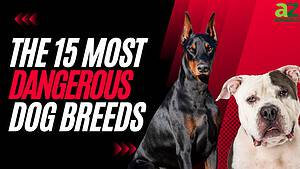Key Points:
- These two breeds of herding dogs originate from different continents. Surprisingly, the Australian Shepherd is an American breed.
- Australian Shepherds tend to be a little larger than Blue Heelers. Australian Shepherds come in different colors and have long, fluffy coats as opposed to the dense, water-resistant coat of the Blue Heeler.
- Both dogs have generally pleasant temperaments. Blue Heelers’ job is to nip at the heels of cattle while herding, so they aren’t always great with kids. On the other hand, Australian Shepherds are laidback, even around kids and other animals.
Even though both breeds are medium-sized herding dogs, the Blue Heeler and the Australian Shepherd are very different. One is an Australian breed related to the dingo and originating in the 1800s. The other is a United States ranch dog.
Surprisingly, the Blue Heeler dog breed (aka Australian Cattle Dog) originated in Australia as a result of breeding Blue Merle Collies with Dingos. The Australian Shepherd is historically American, first gaining popularity in California.
Its name comes from the fact that the Basque people from northern Spain traveled to Australia with Pyrenean Shepherds, which they bred with Border Collies and other British breeds. Then they came to California, where ranchers widely adopted the breed they called Australian Shepherds to herd cattle.
Now, let’s highlight eight other key distinctions between these two breeds.
Five Cool Facts About Blue Heeler vs. Australian Shepherd
The Blue Heeler and Australian Shepherd are two beloved dog breeds with unique traits and characteristics.
Here are five cool facts about these breeds:
- Working Dogs: Both Blue Heelers and Australian Shepherds are bred as working dogs.
- Unique Coat Colors: Blue Heelers get their name from their unique blue coat color, while Australian Shepherds can come in a variety of colors including black, red, and blue merle. Some Australian Shepherds also have striking blue or heterochromatic eyes.
- Athletic Abilities: Both breeds are known for their athletic abilities and excel in activities such as agility, obedience, and herding trials.
- Intelligence: Both breeds are highly intelligent and trainable, which makes them excellent working dogs.
- Companionship: While both breeds are excellent working dogs, they also make great companions.
The Blue Heeler and Australian Shepherd are two unique and fascinating dog breeds with a rich history and many admirable traits.
Comparing Blue Heeler vs. Australian Shepherd
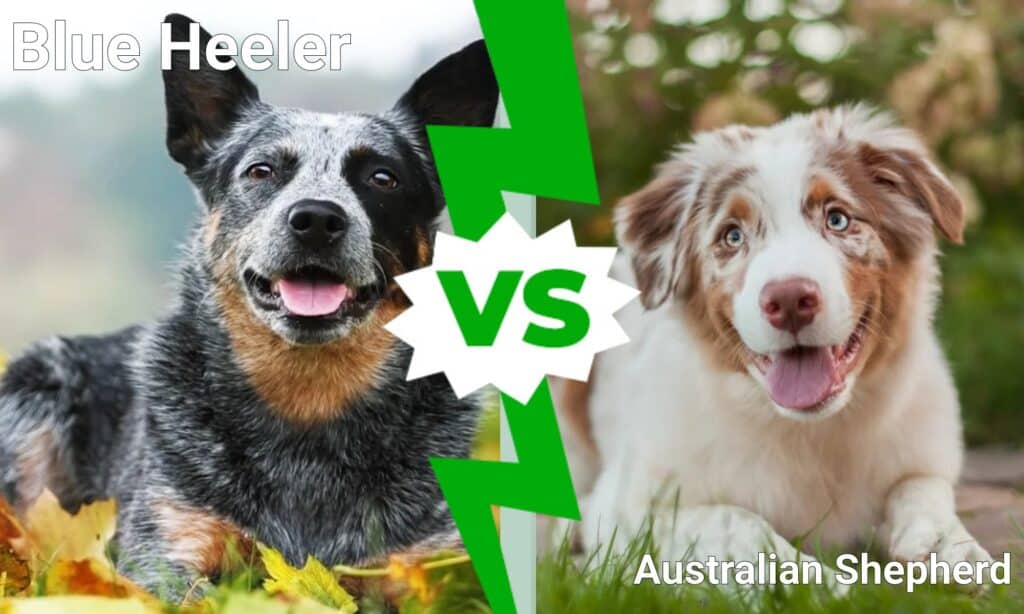
| Category | Blue Heeler | Australian Shepherd |
|---|---|---|
| Size | 17 to 20 inches tall, 30 to 50 pounds | 18 to 23 inches tall, 40 to 65 pounds |
| Coat type | Dense, Water Resistant | Long, Wavy, Fluffy |
| Colors | Red, Blue | Blue, Black, Merle, Red |
| Temperament | Alert, Amiable, Devoted | Active, Friendly, Smart, Loving |
| Impulse to Wander | Higher than Average | Lower than Average |
| Life Expectancy | 10 to 13 Years | 12 to 15 Years |
| Health Problems | Retinal Atrophy, Hip Dysplasia | Degenerative Myelopathy |
Evolution and Origins of Blue Heeler vs. Australian Shepherd
The Blue Heeler, also known as the Australian Cattle Dog, and the Australian Shepherd are both herding dog breeds that were developed in the 19th century.
The Blue Heeler was developed in Australia in the early 1800s. It was bred by crossing the Dingo with various herding dog breeds, including the Smithfield, the Kelpie, and the Collie. The breed was developed to help with the herding of cattle in the harsh Australian outback.
The Australian Shepherd, on the other hand, is not actually from Australia but was developed in the western United States by Basque farmers who came to the United States. The breed was developed by crossing various herding dog breeds, such as the Collie, the Spanish Shepherd, and the Pyrenees Mountain Dog. The breed was used to herd sheep and cattle on ranches in the western United States.
Both breeds are known for their intelligence, trainability, and herding instincts, but there are some physical differences, Blue Heelers are smaller and more compact in structure, while Australian Shepherds are taller and leaner. Blue Heelers have a thick, short coat that is typically blue or blue-mottled with black, while Australian Shepherds have a longer, thicker coat that can be black, blue, red, or merle.
Both of these breeds have been used for herding and working on farms, ranches, and in the wild, but the Blue Heeler has been more successful in Australia, while the Australian Shepherd has gained popularity in the United States.
Key Differences Between the Blue Heeler and Australian Shepherd
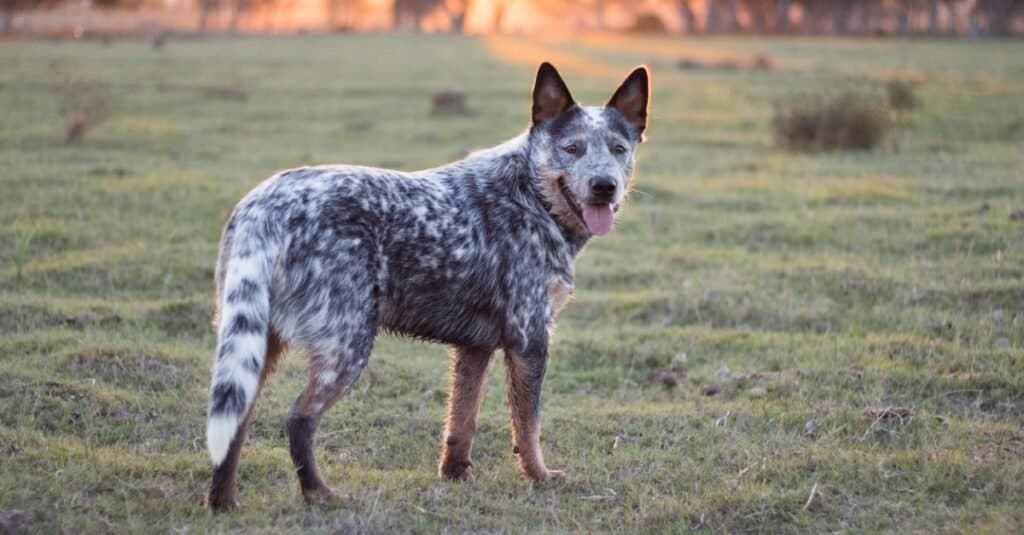
The Blue Heeler is smaller than an Australian Shepherd on average, both in height and weight.
©iStock.com/Madelein_Wolf
The Blue Heeler and the Australian Shepherd differ in a multitude of aspects, including origin, disposition, trainability, and physical appearance. The Blue Heeler is smaller than an Australian Shepherd on average, both in height and weight. Australian Shepherds have fluffy coats, while Blue Heelers have dense and thick fur. Finally, Australian Shepherds have slightly longer lifespans than Blue Heelers.
Let’s explore these differences in more detail now!
Appearance
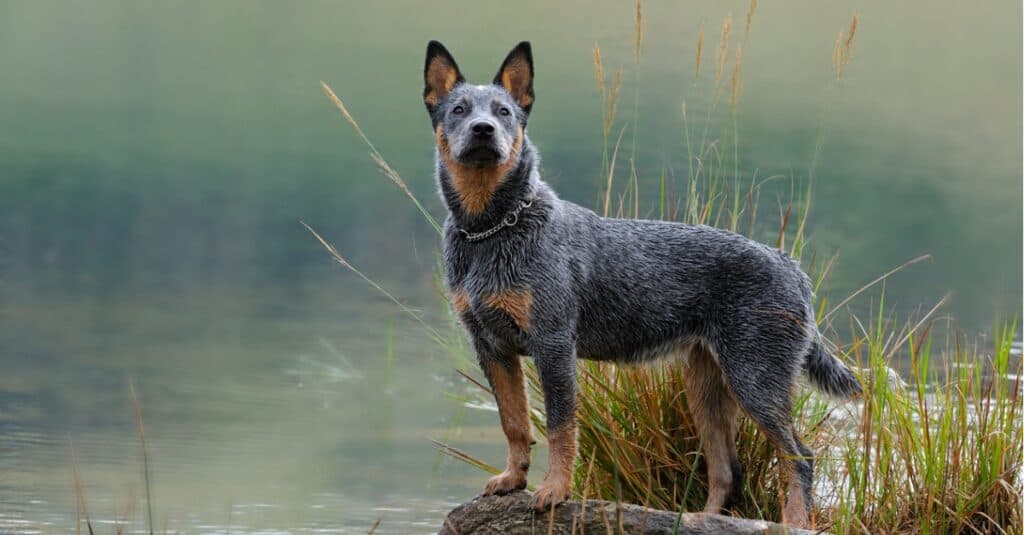
Blue Heelers stand between 17 and 20 inches tall.
©iStock.com/WOLFAVNI
Height
The Australian Shepherd is the largest of the two breeds. Males range in height from paw to shoulder between 18 and 23 inches, whereas Blue Heelers stand between 17 and 20 inches tall. Although it may not appear to be much because they are both in the same size group, a few inches can make a dramatic difference.
Weight
Australian Shepherds are a bit larger than Blue Heelers in terms of size. Australian Shepherd males weigh an average of 58 pounds. The Blue Heeler, which is also referred to as the Australian Cattle Dog, is a smaller breed, weighing an average of 49 pounds.
Coat Type

Australian Shepherds have long, fluffy coats.
©Eudyptula/Shutterstock.com
The Australian Shepherd’s coat is long and wavy, with a dense undercoat and a coarse topcoat. Their facial hair is short, and their back legs are feathered. The breed’s coloration and coat patterns are unique, with no two dogs having the same pattern.
The Blue Heeler has a dense coat because of the Australian environment and outdoor lifestyle. The Australian Shepherd’s coat is much fluffier. In the rain, the Blue Heeler’s water-resistant double layer keeps them dry, with the upper layer acting as a wick.
Colors
Only red and blue are coat colors for a “true” Blue Heeler, aka Australian Cattle Dog. You may see some with chocolate or cream colors, but these are considered flaws by many and may indicate dilution in their purity. The American Kennel Club (AKC) accepts four coat colors in purebred Australian Shepherds. The colors available are black, blue merle, crimson, and red merle.
Characteristics
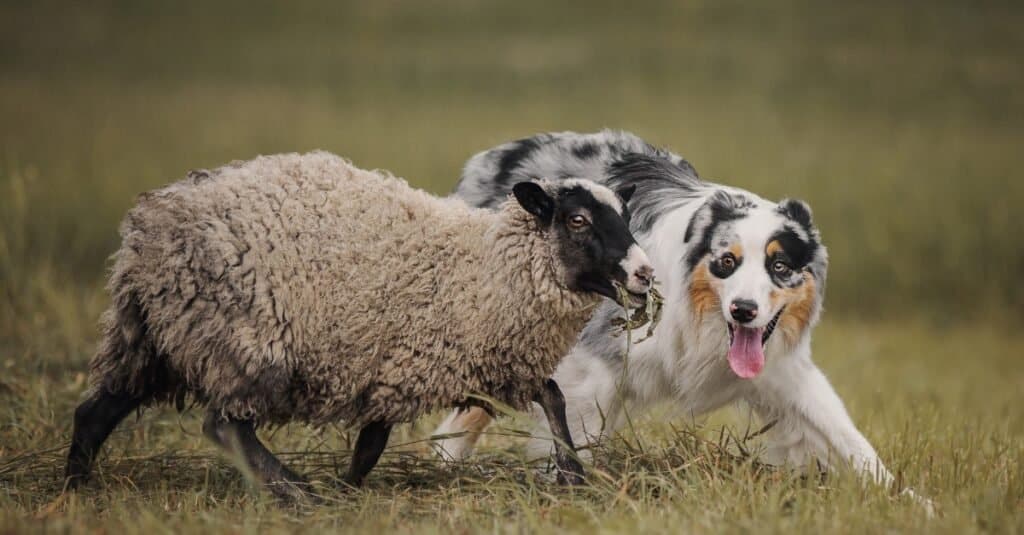
Australian Shepherds have slightly longer lifespans than Blue Heelers.
©iStock.com/Julia_Siomuha
Temperament
Recognized as Australian Cattle Dogs, the Blue Heeler breed is known for its alert, amiable temperament, and intense sense of devotion. Dogs like these aren’t naturally aggressive, so they could be a great fit for families with children.
However, when they do feel threatened, Blue Heelers have a notoriously bad reputation for biting people. Heelers are known for nibbling at cattle’s heels; therefore, they’ll target a person’s heel in the same way. Hence the name “heeler.” As a result, proper training and socialization must begin at an early age.
The Australian shepherd is a playful and easygoing dog that gets along well with children and other animals. Because of their herding skills, Australian shepherds are wonderful pets for families.
Are Blue Heelers Cuddly?
While Blue Heelers are friendly and show their affection toward their owners by loyally staying by their sides, they generally are not bred to be cuddly due to their history as working dogs. Each dog has its own individual temperament, but as a breed they have high energy levels and are very active. Unlike other dog breeds such as Labradors, Pomeranians, or Pugs, that thrive on human contact, Blue Heelers do not need or seek a lot of human contact, petting or cuddles, and may pull back from hugs.
One reason why individual dogs might avoid attempts at cuddling is if they were adopted from a shelter or rescue organization and may have been abused by previous owners or were not sufficiently socialized at an early age. If a dog is in pain and suffering from an injury, it may try to conceal their weakness and keep their distance.
However, there are some situations in which Blue Heelers might be more likely to be cuddly. When these dogs are cold, they might huddle closely to keep warm. If Blue Heelers are scared or anxious, they may feel safer or more protected when nearer their owners. There is a higher probability of these dogs reacting more positively to a hug when they are exhausted after a long day being active. One way to make them more receptive to cuddling is to play with them and actively engage them in dog sports. Socialization with human touch at an early age increases the chance of your dog being open to cuddles.
Are Australian Shepherds Cuddly?
Unlike Blue Heelers, Australian Shepherds generally enjoy cuddling — but only with their owners and family members or those they know and trust.
They are typically wary of strangers and may take a while to become accustomed to a new person, with the possibility they may not warm up at all. As they were bred to guard and herd livestock, they are protective of their loved ones and loyal to them.
Each dog is different and some may be more cuddly than others. As these dogs are active and strong willed, if they are not in the mood to for cuddling, they may shy away from hugs. Although as they age, they become less high-energy and more open to cuddles.
However, like Blue Heelers, Australian Shepherds may not welcome hugs if they suffered abuse from previous owners, were insufficiently socialized at an early age, or experiencing pain and not feeling well.
If your Aussie is not that cuddly, that doesn’t mean your dog doesn’t like you! Your pet may be showing you signs of affection in different ways, such as bringing you a favorite toy so you will play, or showing you the belly in a display of vulnerability and trust. Other physical expressions of affection include nudging you with its nose, smelling you, and sitting on you.
Impulse to Wander
The Blue Heeler has a high degree of wanderlust, showing an ardent desire to see the world. Australian Shepherds, on the other hand, aren’t known for their adventurous nature. They are more at ease in their own home.
Health Factors

Blue healers live for 10 to 13 years.
©iStock.com/Carmelka
Health Problems
Progressive retinal atrophy, canine hip dysplasia, elbow dysplasia, deafness, and Osteochondrosis Dissecans are just a few of the health issues facing the Blue Heeler. Nasal dermatitis, hip dysplasia, and epilepsy are just a few of the ailments that plague Australian Shepherds. Regular eye and hip exams for your Australian Shepherd are usually a good idea.
Life Expectancy
Blue Heelers live for 10 to 13 years. Australian Shepherds live an average of 12 to 14 years. One of the oldest Australian Cattle Dogs on record, a female named Bluey, lived to the ripe old age of 29, which is extremely uncommon.
Wrapping Up Blue Heeler and Australian Shepherd
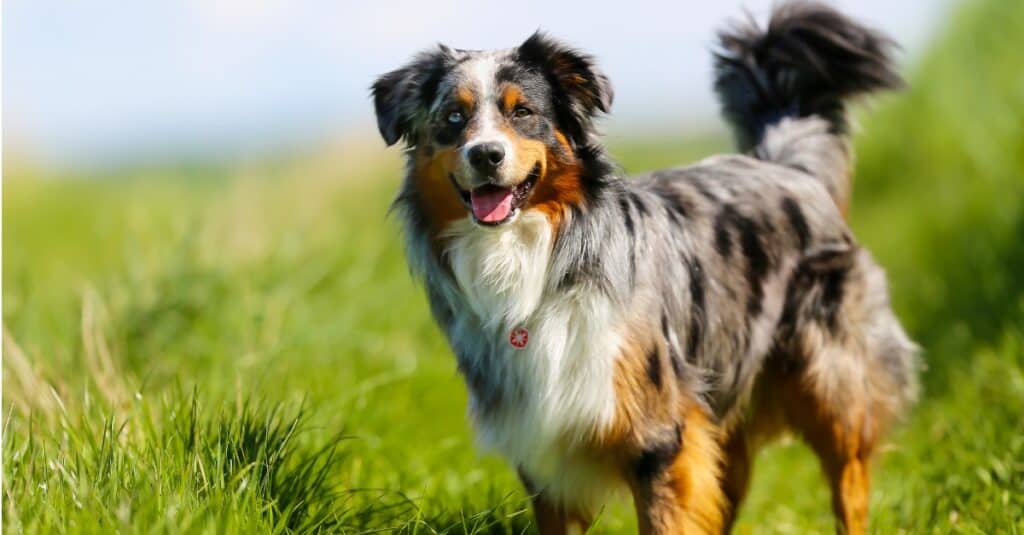
Fiercely loyal, the Australian Shepherd develops a strong bond with its owner.
©iStock.com/Bigandt_Photography
These two breeds can have similar temperaments on occasion because they are both normally nice with youngsters, loyal, and intelligent. However, there are so many distinctions between these two breeds, including their drive to roam and explore, their coats, colors, and place of origin as well. Hopefully, this article has “herded” sufficient information to illustrate the various distinctions between the Blue Heeler and the Australian Shepherd.
Summary of Blue Heeler vs. Australian Shepherd
Here’s a recap of the eight key differences we looked at between these two herding dog breeds.
| Number | Category | Difference |
|---|---|---|
| 1 | Height | The Australian Shepherd is the largest of the two breeds. |
| 2 | Weight | Australian Shepherds weigh a little more than Blue Heelers. |
| 3 | Coat Type | The Blue Heeler has a dense coat, while the Australian Shepherd’s coat is much fluffier, long and wavy. |
| 4 | Colors | For a “true” Blue Heeler, coats are only red and blue. The colors available for Australian Shepherds are black, blue merle, crimson, and red merle. |
| 5 | Temperament | The Australian Shepherd is a playful and easygoing dog. When threatened, Blue Heelers are known to bite people. |
| 6 | Impulse to Wander | The Blue Heeler has a much higher degree of wanderlust than the Australian Shepherd. |
| 7 | Health Problems | Each has different potential health concerns. |
| 8 | Life Expectancy | Australian Shepherds typically live longer than Blue Heelers. |
The photo featured at the top of this post is ©
Ready to discover the top 10 cutest dog breeds in the entire world?
How about the fastest dogs, the largest dogs and those that are -- quite frankly -- just the kindest dogs on the planet? Each day, AZ Animals sends out lists just like this to our thousands of email subscribers. And the best part? It's FREE. Join today by entering your email below.
FAQs (Frequently Asked Questions)
Is the Blue Heeler the Same as the Australian Cattle Dog?
To be honest, there is no difference except for color. The Australian Cattle Dog and the Blue Heeler are identical dogs. The phrase “Blue Heeler” refers to blue Australian Cattle Dogs. Red Heelers are Australian Cattle Dogs that are red in color.
Thank you for reading! Have some feedback for us? Contact the AZ Animals editorial team.




